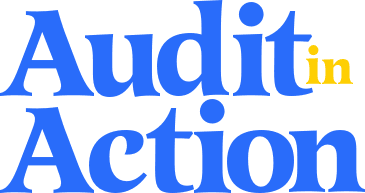Unveiling the Value of Critical Audit Matters (CAMs) for Investors
In light of ongoing discussions around the critical audit matters (CAMs) communicated in PCAOB audit reports, the CAQ sought to better understand investors’ understanding and use of CAMs. The results, institutional investors surveyed regularly use CAMs in their decision-making processes.
The Big Picture: What Are Critical Audit Matters (CAMs)?
Taking a step back, CAMs are by definition any matter arising from the audit of the financial statements that was communicated or required to be communicated to the audit committee. The matter must also be one that (1) relates to accounts or disclosures that are material to the financial statements and (2) involved especially challenging, subjective, or complex auditor judgment. CAMs enable auditors to communicate in their auditor’s report those matters that were especially challenging, subjective, or complex during the audit of a company’s financial statements.
Communicating CAMs in the auditor’s report enables auditors to communicate directly with the user of the report, and can bridge the information gap between auditors and investors, providing investors with more information about the audit, likely in areas that would be of particular interest to them.
CAMs enable auditors to communicate in their auditor’s report those matters that were especially challenging, subjective, or complex during the audit of a company’s financial statements.
Zooming In: Investors’ Use of CAMs:
After five years of auditor reporting that includes CAMs, there is some debate over the success of the new model, but recent CAQ research appears to indicate that some benefits have been achieved.
Our survey found that investor respondents had strong positive feedback regarding CAMs.
- Nearly all (93%) investors surveyed indicated that they read the CAMs section in 10-Ks of companies they invest in or are researching, and 78% indicated that they do so often.
- 92% of respondents indicated that they use CAMs in their investment decision-making process
- 93% said that, considering all the sources of information available to them, CAMs play a very important (53%) or somewhat important (40%) role in their analysis of potential investments.
- Additionally, nine in ten investors stated that they are very satisfied (48%) or somewhat satisfied (42%) with the quality and clarity of CAMs disclosed in most audit reports, with only 2% of respondents expressing dissatisfaction.
Of the small number that expressed dissatisfaction with the quality and clarity of CAMs, they indicated that the language used to describe CAMs is not clear or overly complicated.
While satisfaction levels were high according to the survey, investor respondents did have some suggestions for ways in which CAMs could be improved.
More than half (58%) of investors surveyed indicated that they prefer to see more CAMs identified in an auditor’s report; and when asked what changes to CAMs would benefit their investment decisions, approximately half of respondents shared that both increasing the number of CAMs (52%) and increasing the detail provided in CAMs (51%) would be beneficial. Twenty-five percent of respondents also felt that requiring CAMs related to specific audit areas would be advantageous, but there was no consensus regarding the specific areas in which required subject matter specific CAMs were desired.
When asked to rank which information related to CAMs respondents do or would find most important to their investment decisions, the most selected responses were the inherent risk associated with the CAM (50% of respondents ranked as 1 or 2) and the topic/area of the CAM (46% of respondents ranked as 1 or 2). This feedback was interesting, as the topic area of the CAM is something that is currently required to be disclosed, but the inherent risk associated with the CAM is not required and is not frequently included in auditor’s reports today.
The results of our survey suggest that CAMs are understood and provide value to investors. As one investor wrote, “I find audit transparency critical to assessing a company’s financial health. CAMs can reveal the most complex or judgmental areas of an audit, which helps me identify potential risk points.”
While CAMs will continue to evolve to meet investors’ information needs, it is gratifying to see evidence that the efforts of standard setters and auditors to increase transparency around the audit process with the communication of CAMs is benefiting the capital markets.
I find audit transparency critical to assessing a company’s financial health. CAMs can reveal the most complex or judgmental areas of an audit, which helps me identify potential risk points.
